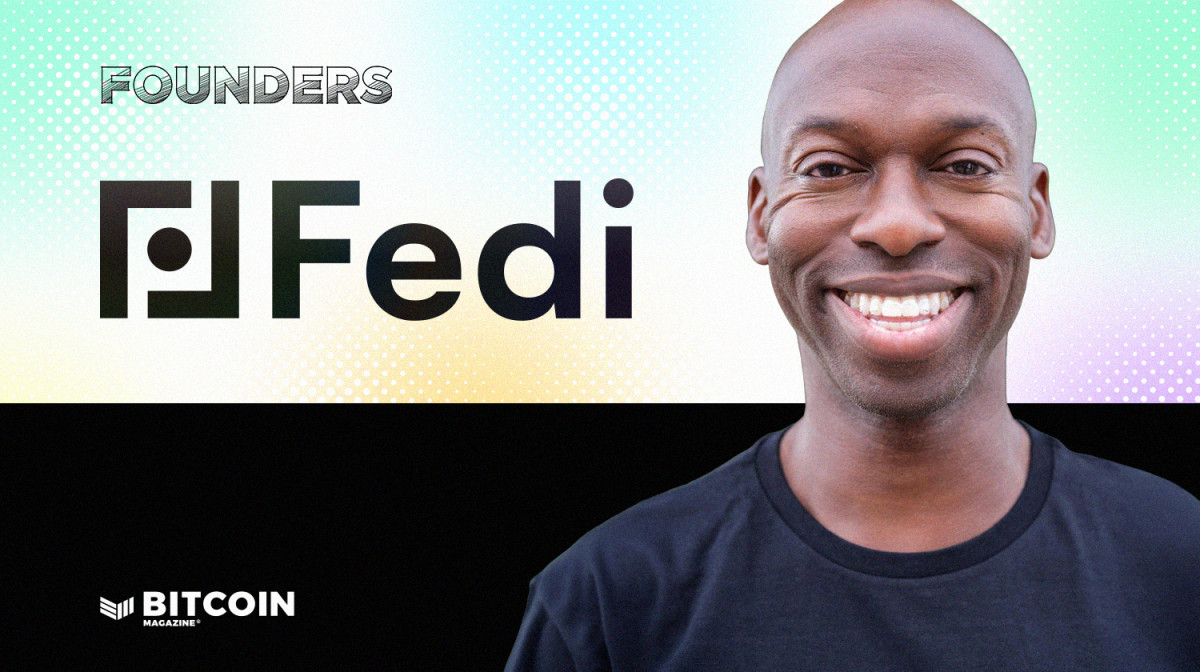Month: August 2024
Goldman Sachs Holds Over $400M in Spot Bitcoin ETFs
Goldman Sachs has disclosed $418 million holdings in spot Bitcoin exchange-traded funds (ETFs), signalling a growing institutional appetite for Bitcoin exposure.
BREAKING: 🇺🇸 Goldman Sachs reports holding over $400 million in spot #Bitcoin ETFs in new SEC filing 👀 pic.twitter.com/n4nWDfCm6w
— Bitcoin Magazine (@BitcoinMagazine) August 14, 2024
In a quarterly filing, the Wall Street titan revealed investments in 7 different Bitcoin ETFs available in the U.S. market. Its largest position was in BlackRock’s iShares Bitcoin Trust (IBIT), worth nearly $240 million.
Goldman also held shares of the $79.5 million Fidelity Bitcoin ETF, $35.1 million in Grayscale BTC, $56.1 million in Invesco Galaxy Bitcoin, $8.3 million in Bitwise Bitcoin ETF, and smaller stakes in funds from WisdomTree, Ark Invest.
The disclosure highlights surging institutional demand for Bitcoin products as Bitcoin gains mainstream adoption. With its sizable and diverse Bitcoin ETF holdings, Goldman aims to benefit from Bitcoin’s upside potential without direct ownership.
Earlier this year, Goldman Sachs’ head of digital assets called Bitcoin ETFs an “astonishing success,” signalling a pivot after years of the Wall Street giant’s scepticism about Bitcoin.
As legacy finance gradually embraces Bitcoin, Bitcoin ETFs have become a prime gateway for institutional participation. ETFs offer familiarity and liquidity while muting Bitcoin’s volatility swings.
Eventually, most major financial institutions will likely hold significant Bitcoin exposure to meet client demand. Goldman’s Bitcoin ETF bet signals an understanding that Bitcoin is here to stay.
Asia FX gains as dollar dips ahead of CPI data; Kiwi battered by rate cut
Post Content
Bitcoin Pioneer Chun Wang to Command SpaceX’s First Mission Over Earth’s Polar Regions
Chun Wang, the co-founder of Bitcoin mining pool f2pool and a well-known figure in the Bitcoin community, is set to command SpaceX’s first human spaceflight mission to explore Earth’s polar regions from orbit. Wang, who began mining Bitcoin back in 2011, said he has been eagerly preparing for this mission for the past 2.5 years and has been involved in every aspect of the mission, from the initial proposal and planning to the trajectory design and crew selection.
“Named in honor of the ship that helped explorers first reach Earth’s Arctic and Antarctic regions, Fram2 will be commanded by Chun Wang, an entrepreneur and adventurer from Malta,” SpaceX announced. “Wang aims to use the mission to highlight the crew’s explorational spirit, bring a sense of wonder and curiosity to the larger public, and highlight how technology can help push the boundaries of exploration of Earth and through the mission’s research.”
Fram2 will become the first human spaceflight mission to fly over and explore the Earth’s polar regions from orbit. Learn more about the @framonauts mission here → https://t.co/3InB5ybsIx pic.twitter.com/rZ2PCw0GlX
— SpaceX (@SpaceX) August 12, 2024
“This mission represents a new chapter in space exploration,” said Wang. “I’ve read many sci-fi stories about the first human missions to Mars, usually led by NASA or some fictional government. Rarely does anyone dare to imagine such a mission may be carried out privately. But now, I increasingly believe that someday we will reach Mars — and it may be a person, or a company, not a nation, who gets there.”
Please allow me to quote Steve Jobs’s original iPhone announcement in 2007: “This is a day I’ve been looking forward to for two-and-a-half years. Every once in a while, a revolutionary product comes along that changes everything.”
Yes, I’ve been looking forward to this mission…
— Chun (@satofishi) August 13, 2024
Joining Wang on this mission is an international team of adventurers, including Norway’s Jannicke Mikkelsen, Australia’s Eric Philips, and Germany’s Rabea Rogge. Over the course of 3 to 5 days, the crew will observe the polar regions from Dragon’s cupola at an altitude of 425 to 450 km. They will study phenomena such as auroras and unusual light emissions, known as STEVE (Strong Thermal Emission Velocity Enhancement), and conduct a variety of research to better understand the effects of spaceflight on the human body, to gain insights into space physics and atmospheric science.
Dollar weakens as markets await US consumer price data
Post Content
Fedi Combines Bitcoin And Other Freedom Tech With Community
Company Name: Fedi
Founders: Obi Nwosu, Justin Moon and Eric Sirion
Date Founded: June 2022
Location of Headquarters: Fully remote
Amount of Bitcoin Held in Treasury: N/A
Number of Employees: 27 full-time employees
Website: https://www.fedi.xyz/
Public or Private? Private
Just a few years back, Obi Nwosu was running Coinfloor, a successful, long-running bitcoin exchange, out of the UK. But something irked Nwosu. He knew that he could be doing much more with freedom technologies like Bitcoin to help people around the world.
So, he and two partners founded Fedi, a company that’s recently released a “community superapp,” as Nwosu calls it, that provides an easy and private way to not only to manage money but to communicate digitally and meet the different needs of communities worldwide.
“We created Fedi because it solved a problem that we could see,” Nwosu told Bitcoin Magazine.
“That problem was how to empower disempowered communities around the world and how to get millions of people that were using [bitcoin] exchanges and give them a path to go from third parties to self-custody,” he added.
“We realized that the middle ground was community. If we could find a way to empower communities — to provide an offering which was as good, or in some ways better, than the centralized offerings that are by far still the [custodians that the] vast majority of people use, [and replace them with] parties who individuals trust more than they trust these third parties — that would be the path. That was the beginning idea, and the rest is history.”
To slightly alter Nwosu’s words, one might say that the rest is history in the making.
After over two years of developing the Fedi superapp, the company took it live on August 6, 2024. And what the app offers even in its first iteration is perhaps more than even Nwosu himself envisioned when he undertook the project.
What Is Fedi?
Fedi the company has two main components, according to Nwosu.
“It has the app, also called Fedi, and it has a network of experts who are local and can support users,” he explained. “We call them the Fedi Order.”
The app leverages what Nwosu refers to as “freedom technologies” like Bitcoin, Lightning and Nostr. It also employs the Fedimint protocol, which enables users to share custody of bitcoin; utilize the Lightning Network; and mint ecash, digital tokens pegged to the value of bitcoin, fiat currencies or other assets that are used to preserve privacy in transactions.
Beyond that, it lets users send messages privately and has other functionalities, features and even other apps within the app — hence the term “superapp.”
“You don’t have to install multiple apps to get things done,” explained Nwosu. “[With Fedi,] you have one app and you can, in one place, do all the different things you need to do.”
Imagine having WhatsApp, Twitter and Venmo all in one app. This is what Fedi offers, albeit with different, more freedom tech-orien versions of messaging, social media and payment apps.
However, because some of this technology is new and difficult to use — particularly Bitcoin, Lightning and ecash mints — Fedi provides community support via the Fedi Order, composed of “Fedi Knights,” which serves as a “decentralized Genius Bar,” according to Nwosu.
“If you’ve got an iPhone and have a problem with it, you can go to an Apple store and walk up to the Genius Bar and someone who is knowledgeable can help you solve that given problem,” he said.
“We wanted to replicate that feel. That’s what the Fedi Order does. They provide on the ground community support, which you need if you want to take Bitcoin beyond expert users or enthusiasts,” Nwosu added.
This type of support is particularly useful for the guardians of Fedi communities.
Guardians And The Federated Custody Model
To accomplish Nwosu’s initial plan for Fedi — helping to move bitcoin off of exchanges and into the self-custody of its owners — the company utilizes a federated custody model, or a multisig setup in which various “guardians” hold the keys to bitcoin funds.
Community members select people to be guardians, and these guardians run the Fedi software together so that trust is dispersed amongst them. They’re also in charge of custodying the community’s bitcoin and minting ecash. Together, the guardians form a federation, a custodial model without a single point of failure.
“[Each guardian is] individually trustworthy, otherwise they wouldn’t be in those roles,” said Nwosu.
“The fact that you require two of the three or three of five [to sign off on transactions] increases your trustworthiness significantly. We see this way of working occur in organizations, companies, governments, military and families time and time again,” he added.
“You can add more guardians to increase the level of redundancy and resilience.”
Guardians will also make decisions for their community regarding how to employ the different modules, or “mods”, that Fedi offers.
“Modules are a way of upgrading their Fedi with [more] capabilities,” said Nwosu.
For context, all Fedimints come with three modules: the Bitcoin module, which provides federated access to bitcoin; the Lightning module, which provides communities with access to the Lightning Network; and the mint module, which gives users the ability to mint ecash.
Nwosu shared that there are also additional modules, one of which is a stability pool module, that provides what Fedi terms a “Stable Balance” for assets.
Using the Stable Balance feature, communities can peg their bitcoin to the value of a fiat currency, or the value of another asset — a particularly important feature for communities that might not want to stomach bitcoin’s volatility.
“As long as there is a price feed between Bitcoin and an asset, a stability pool can be set up to provide price stability to the asset,” explained Nwosu.
“That could be USD, but it could be the local currency. It could be gold. It could be Tesla stock. Different people will use it in different ways,” he added.
Open-Sourcing Fedi
One might think that a company that’s taken the time to build a superapp would want to keep that code under wraps.
Not Fedi, though.
It plans to open-source its code — code that’s already publicly auditable. Part of the organization’s motivation in doing so is to further earn the trust of the communities it serves, but it also has two other notable reasons for taking this step.
The first revolves around the company’s philosophy.
“First of all, philosophically, our number one objective is to build a tool that takes the best of the freedom technologies out there and merges them into one,” explained Nwosu.
“We believe that for many people, privacy and being reliable is really key when it comes to something that’s handling your communication, money and more. The only way to ensure that is at the highest levels is for Fedi itself also to eventually become open-source,” he added.
The other main reason has to do with following the trend in the Bitcoin and broader freedom tech space.
“The second part is we’re part of the freedom technology community and Bitcoin community,” said Nwosu.
“Five years ago, the idea of open-sourcing [code] would have seemed really strange, if not crazy, for an organization like us. Our prediction is that in five years time, it will be crazy to be closed-source, and we’re seeing this transition,” he added.
“That is the future — we’re just getting ahead of it.”
In a world where it will be much easier to replicate applications, Nwosu isn’t afraid that potential Fedi copycats will eclipse what the company has to offer.
“We realized that the things that are going to still have enduring power are network effects and the human elements of your business,” said Nwosu. “So, we built a business model that really leverages human networks, which are not so easy to replicate.”
Global Adoption
Though Fedi currently focuses most of its efforts on The Global South — which includes regions such as Africa, Latin America and Southeast Asia — it has its sights set on “everyone, everywhere” eventually using it, according to Nwosu.
However, the company is starting with The Global South because it plans to first meet the needs of those often considered last, which will help it to meet the needs of everyone.
“When you’re looking at the pyramid of users and needs, if you focus on the top percentage of users, it’s going to be very difficult for you to drive down to a set of users who maybe have less resources, less assets,” explained Nwosu.
“If the car you’re making is a Ferrari, it’s very hard to make that car for everyone. But if the car you’re making is a VW Golf, then it’s very easy for someone who can afford more than a VW Golf to continue to use a VW Golf,” he added.
“By focusing on some of the most disempowered communities, you end up with a product or tool which is useful for everybody, as opposed to useful [only for a] subset. When aiming for the widest funnel, you should try to go for the broadest reach you can, which means that we start focusing on the people who normally are not focused on first, but focused on last.”
Also, people are struggling to manage and use their bitcoin all over the world, and Fedi’s approach in providing human support for its users will help bitcoin do what it was designed to do, act as peer-to-peer electronic cash.
“You cannot just solve this with software,” said Nwosu. “If you want people to use this as medium exchange you have to solve a combination of software and people.”
Assessing the Lightning Network’s Last-Mile Solutions
Custodial Lightning has clearly achieved product market fit. Users benefit from instant Bitcoin payments and minimal fees, while custodians manage the complexities of channel and liquidity management. Major platforms like Coinbase, Cash App, Kraken, and Binance provide over 200 million users with direct access to Lightning payments. While the Lightning Network excels at facilitating payments between custodial wallets, doing so for mobile, self-custodial users is more challenging, particularly during periods of high transaction fees. As Roy Sheinfeld, CEO of Breez, wrote earlier this summer, this challenge is analogous to the “last-mile problem” observed in various transportation networks—from telecommunications to roads to airlines—where extending services to remote users is significantly more costly and offers lower returns on investment than infrastructure serving dense, central areas.
As Bitcoiners, we believe in the maxim “not your keys, not your coins,” so it is important to build last-mile solutions for self-custodied users. Two major areas of user experience (UX) improvements are needed to bring non-custodial Lightning UX on par with custodial UX.
The first area of UX improvement is wallet interactivity. In today’s LN, the receiving node needs to be online to sign a hashed time-locked contract (HTLC) to complete a Lightning payment. This is trivial for custodial wallets, as the custodian is in charge of keeping the node online and connected 24/7, but it is a particularly high burden for self-custodial mobile users. The LN community is making great strides in mitigating this issue. ACINQ and Breez have delved into mobile OS background notifications and generally seem happy with the current state. The Async Payments initiative proposes to let always-online Lightning Service Providers (LSPs) help without introducing trust, minimizing the lifetime of active HTLCs in the network by only forwarding the payment once a client has woken up. Additionally, the Atomic Multi-Path Payments (AMP) standard in LND allows for static invoices that the receiver can settle payments to without interacting with the sender at all (beyond the normal pre-image reveal).
The second major area for UX improvement is blockchain interactivity. Once a custodial wallet is live on the network with channels opened, there is nearly zero marginal cost for onboarding new users. For self-custodial users, onboarding requires one on-chain transaction (generally confirmed on-chain within minutes), which can be expensive depending on fee market conditions. Additional liquidity operations like using submarine swaps to move funds from on-chain to LN, or splicing to resize a channel, also generally require an on-chain transaction (though some cost savings is possible by batching multiple swaps or splices into a single transaction today). ZmnSCP has written a great Twitter thread describing the blockchain interactivity requirements for these liquidity operations today. There are various solutions in progress to mitigate blockchain interactivity for self-custodial LN users.
This essay assumes that wallet interactivity as a UX improvement is solved and focuses instead on the blockchain interactivity aspect of last-mile solutions for LN. First, it will outline the ideal solution, then examine the various attempts in the market today, and finally make recommendations about paths forward.
Channel Factories: The Holy Grail
The most capital-efficient way to run a non-custodial LN wallet business would be to leverage the mythical channel factory (first introduced by Christian Decker, Conrad Burchert, and Roger Wattenhofer in 2018). Imagine a Lightning wallet company and a partner liquidity provider running routing nodes that are already broadly connected to LN. They jointly instantiate a channel factory on-chain by each contributing 5 BTC into a special 2-of-2 multisig wallet. Every time a new user creates a wallet, they are instantly opened a direct channel with one of the routing nodes from within that channel factory UTXO, without requiring any on-chain confirmation at all. Additionally, every time a user needs more inbound liquidity, or the LSP wants to reclaim liquidity from inactive users, the channel splice operation to reallocate that liquidity around can occur without requiring any direct on-chain confirmation. The routing nodes would periodically want to spend the factory UTXO to batch confirm all the off-chain updates, achieving 1000x or more economies of scale compared to today’s operations. Any user that wanted to upgrade to full self-sovereignty on-chain could do so by paying the routing nodes to create them a channel on-chain directly, exiting the factory.
Essentially, imagine Phoenix’s, Breez’s, or Zeus’s UX today if on-chain fees and confirmation times were completely removed from the equation for end users because their routing nodes were able to make channel-related operations off-chain and confirm them in massive batches on-chain when convenient and economically rational. This is the Holy Grail for self-custodial LN.
The ideal channel factory design has not been built yet because it requires covenants. At bitcoin++, Brandon Black presented on the many different ways to make bitcoin scripts that support channel factories with the various covenants proposals, and determined they were all fairly similar in size whether using OP_CAT, OP_CTV and OP_CSFS, or Sighash_ANYPREVOUT. It’s possible that similar UX could be accomplished without covenants by adding a co-signer to the channel factory output with the routing nodes, who would need to be trusted not to collude with them to steal any funds. Instead of waiting for these designs to make it into production, wallet developers have been exploring other solutions.
Ecash: The Chaumian Ecash Bitcoin Banks
Mutiny Wallet was an exciting new self-custodial mobile Lightning wallet. They felt the pain of onboarding users to new Lightning channels in high fee environments, and developed an interesting mitigation to the blockchain interactivity requirement. Instead of each new user immediately receiving their own Lightning channel (requiring an on-chain transaction), Mutiny Wallet defaulted to new users receiving ecash in a Fedimint until they hit a certain threshold, after which they are offloaded to their own Lightning channels.
This design approximated the UX of the above channel factory ideal in that users were onboarded without blockchain interactivity, and ongoing user maintenance (until they crossed the threshold) is abstracted from the blockchain as well. Users simply own a balance of coins with no inbound liquidity requirements, and can settle payments within seconds. Despite these upsides, however, Fedimints do introduce certain trust assumptions:
Ecash tokens are not bitcoin, lacking the auditability and verifiability characteristics that make bitcoin specialEach Fedimint depends on a federation of Guardian nodes for its operations, and users have no recourse if the federation steals their fundsIf the federation of Guardian nodes lose data (fully or partial), it’s possible that funds can’t be spent at all
And the good news is that Fedimints work on mainnet bitcoin today! Just last week, Fedi announced that their mobile wallet is providing their users (at scale!) with a comparable onboarding UX to custodial Lightning. Cashu is a similar Chaumian ecash protocol with several wallets in development as well, though generally backed by a single custodian instead of a federation. This is to be applauded, though it is not the only last-mile solution in production today.
Sidechains: the Federated Bitcoin Banks
For years, developers have mused about connecting Blockstream’s Liquid sidechain to the Lightning Network. In 2024, those musings became reality when Aqua Wallet launched their Lightning integration powered by the Boltz submarine swap server. When a new user downloads Aqua Wallet and receives their first Lightning payment, they do not get their own Lightning channel (requiring a mainnet bitcoin on-chain transaction). Instead, Boltz receives a Lightning payment, and pays out LBTC on the Liquid sidechain to the user, who can then either make Liquid payments or pay Lightning invoices by swapping with Boltz again. Unlike with Mutiny, Aqua Wallet users are never expected to have their own Lightning channels, as it is a Liquid wallet with a Lightning integration via submarine swaps. Amboss recently launched the closed beta for a similarly architected wallet called MiBanco.
Similar to Mutiny’s Fedimint integration, this design approximates the UX of the above channel factory ideal in that users are onboarded without mainnet bitcoin blockchain interactivity, and ongoing user maintenance (until they cross the threshold) is abstracted from the bitcoin blockchain as well. Users simply own a balance of coins with no inbound liquidity requirements, and can settle payments within minutes. Sidechains do have their downsides though:
Sidechains are operated by a federation, like Fedimints, and users have no recourse if the federation steals their funds.Sidechains are blockchains, so the “blockchain interactivity” requirement is not removed. Liquid has low fees and 1-minute block times, but at scale fees will go up and Boltz is only able to provide instant swaps by taking zero-confirmation risk.
Many more bitcoin sidechains like Liquid will be launching in the coming 18 months (most hoping to use the BitVM project as a way to minimize the trust required in the bridge from the main chain to their sidechain environment), and I expect all of them to support a similar Lightning integration for their users. Botanix, the company building the “spiderchain”, already has an open source project from a community developer implementing such a submarine swap server as a Lightning bridge for any EVM-based sidechain. Hopefully, these sidechains bring many new users to bitcoin, all of whom get a custodial Lightning-esque UX with only the following trust assumptions: their federation is an honest majority, their LN swap server is well-maintained, and that their sidechain does not get congested.
Ark: the Self-Custodial, Supply Auditable Bitcoin Bank
Ark is a relatively new proposal for a Lightning last-mile solution, ideally leveraging covenants opcodes that currently exist on the Liquid sidechain, but would require a bitcoin soft fork on the main chain. Ark’s design depends on a trust-minimized Ark Service Provider (ASP) accepting deposits (either on-chain or via the Lightning Network) from users, processing their transactions off-chain as virtual transaction outputs (VTXOs, which can be thought of as auditable and redeemable ecash proxies), and allowing unilateral withdrawal on-chain. The ASP handles all liquidity constraints, allowing users to receive off-chain without first needing direct inbound liquidity, and periodically refreshes the state of the off-chain system by making just a single on-chain transaction.
Ark designs that are able to leverage covenants opcodes most closely approximate the UX and trust assumptions of the ideal channel factory design. Users can receive to an Ark address from any bitcoin wallet without any interactivity requirements, and the ASP just needs to manage the total liquidity of the system, rather than the liquidity of each channel with each user, simplifying operations. The downside of this design is that the total liquidity requirements put on the ASP scale with the off-chain transaction volume, as VTXOs cannot be reused once spent until the ASP has refreshed the state of the system. This means that if $10M of volume is expected in a one week period, the ASP needs to supply at least $10M of capital for its users (contrasted with LN, where capital can be reused). This downside could be partially mitigated by making each VTXO a Lightning channel, which would make Ark nearly indistinguishable from the ideal channel factory specified above (except for the fact that users would still need to sign on to refresh their VTXO channels periodically).
Ark without covenants, colloquially known as clArk, is also possible but will not provide a comparable UX to today’s custodial LN wallets as it will have significant end user interactivity requirements:
Depositing funds into the clArk requires cooperation, so sending directly to a clArk address from a bitcoin wallet that is not running any clArk software will not be supportedReceiving VTXOs in clArk is asynchronous as long as the sender cooperates with the ASP in a model similar to statechains (where the coordinator server can steal funds by colluding with a previous sender), but trustless receives require both sender and receiver to be online at the same timeVTXO holders must store pre-signed transactions to guarantee their unilateral exit and must come online to sign each refresh period to prevent the ASP from being able to take their coins. The duration of this refresh period is up to each ASP, so the implications for the average user is unclear.
In a way, Ark is a proto-channel factory design. Similar to Ark, channel factories could be built on bitcoin today, but the designs are significantly improved with covenants. It will be interesting to see how the clArk implementations coming to market in the next year or two function as Lightning last-mile solutions, and will certainly help inform those looking at future channel factory designs as well.
Conclusion
The winning last-mile solution for Lightning usage will be the one that provides the simplest UX, the greatest payment reliability, and the lowest cost (both to the user and the wallet operator). Each will require its own integration with the Lightning Network, and there will likely be a power law effect in terms of users onboarded, so speed and go-to market strategy will really make a difference. Today, the simplest UX, greatest payment reliability, and lowest cost generally belongs to custodial Lightning wallets, but there are exciting developments with ecash, sidechains, and Ark that promise to enable a competitive self-custodial Lightning experience. Covenants both enable the platonic ideal channel factory experience, and improve all of these different last-mile solutions. Bitcoin and Lightning are already succeeding in growing into the default value transfer networks for the world, especially with Taproot Assets now available on Lightning (which all of these last-mile solutions will support), but if we want self-custodial users to be first class citizens in this future, we should rally around this vision and continually invest in these last mile solutions.
This is a guest post by Ryan Gentry. Opinions expressed are entirely their own and do not necessarily reflect those of BTC Inc or Bitcoin Magazine.
Over 1 Million Bitcoin Addresses Hold 1 BTC or More, Reflecting Strong Adoption
According to data from Bitcoin Magazine Pro, there are 1,012,650 Bitcoin addresses that contain 1 BTC or more.
This represents more than 1 million BTC potentially taken off the market and held by strong hands, a significant portion of the 21 million BTC that will ever exist. Demand continues to rise as U.S. spot Bitcoin ETFs collectively hold over 901,000 BTC, while MicroStrategy, a major corporate Bitcoin holder, owns 226,500 BTC. Additionally, MicroStrategy plans to raise $2 billion to buy more Bitcoin, further emphasizing the trend of institutions buying and holding substantial amounts of BTC, tightening the available supply as demand increases.
The number of Bitcoin addresses holding 1 BTC or more has historically lagged behind BTC’s price. However, in the past two years, this trend has reversed, with the number of these addresses increasing more rapidly than Bitcoin’s price. This shift signals growing adoption and reflects rising long-term confidence in Bitcoin, as more users accumulate and hold significant amounts of Bitcoin.
The rise in addresses with 1 BTC or more signifies that both retail and institutional investors are actively accumulating Bitcoin. With only 21 million BTC ever to be mined, and approximately 19 million already in circulation, the demand for Bitcoin appears to be increasing as users aim to secure their share of the limited supply.
For more detailed information, insights, and to sign up to access Bitcoin Magazine Pro’s data and analytics, visit the official website here.
Russian rouble touches 10-month low vs dollar following Kursk attack
Post Content
Unwinding of carry trade roadblock for BoJ hikes but not Fed cuts – Goldman
Post Content
Metaplanet Buys Another ¥500 Million Worth of Bitcoin
Metaplanet, a publicly listed Japanese investment firm, purchased an additional ¥500 million ($3.4 million) worth of bitcoin. This brings the company’s total Bitcoin holdings to 303, acquired for ¥2.95 billion ($20 million).
JUST IN: 🇯🇵 Metaplanet buys another ¥500 million worth of #Bitcoin pic.twitter.com/dfGWwqNBXw
— Bitcoin Magazine (@BitcoinMagazine) August 13, 2024
On August 6th, Metaplanet announced plans to raise ¥10.08 billion through a stock rights offering to expand its Bitcoin reserves. It followed on August 8th with a ¥1 billion loan secured to buy more Bitcoin.
The firm has aggressively pursued a Bitcoin accumulation strategy this year to strengthen its balance sheet. Metaplanet believes Bitcoin can appreciate significantly and hedge against yen depreciation.
The latest ¥500 million bitcoin buy was for 57.1 BTC at an average price of ¥8.8 million per bitcoin. Metaplanet’s total 303 Bitcoin were acquired for ¥9.7 million per Bitcoin on average.
The company is taking a page from MicroStrategy’s playbook, aggressively using debt and equity to grow its Bitcoin stash. Metaplanet stock has been significantly up since first announcing its Bitcoin pivot in April, despite recently falling from year-highs. The company is positioning itself as a publicly traded proxy for Bitcoin exposure in Japan.
Other firms like MicroStrategy, Marathon Digital Holdings, and Semler Scientific are also raising money in debt markets to buy more Bitcoin and ride its adoption curve. These savvy public companies are using the fiat system’s cheap lending rates to accumulate scarce Bitcoin.
Disclaimer: Bitcoin Magazine is wholly owned by BTC Inc., which also operates UTXO Management, a regulated capital allocator focused on the digital assets industry and invested in Metaplanet. UTXO invests in a variety of Bitcoin businesses, and maintains significant holdings in digital assets.









